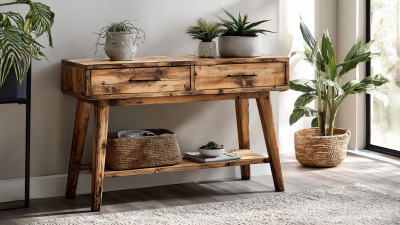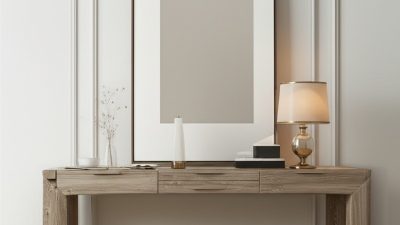Choosing the perfect dining table is a crucial step in enhancing the aesthetic appeal and functionality of your home. According to a recent report by the National Kitchen and Bath Association, nearly 70% of homeowners prioritize a dining area that fosters gatherings and conversations, highlighting the importance of a well-selected dining table.
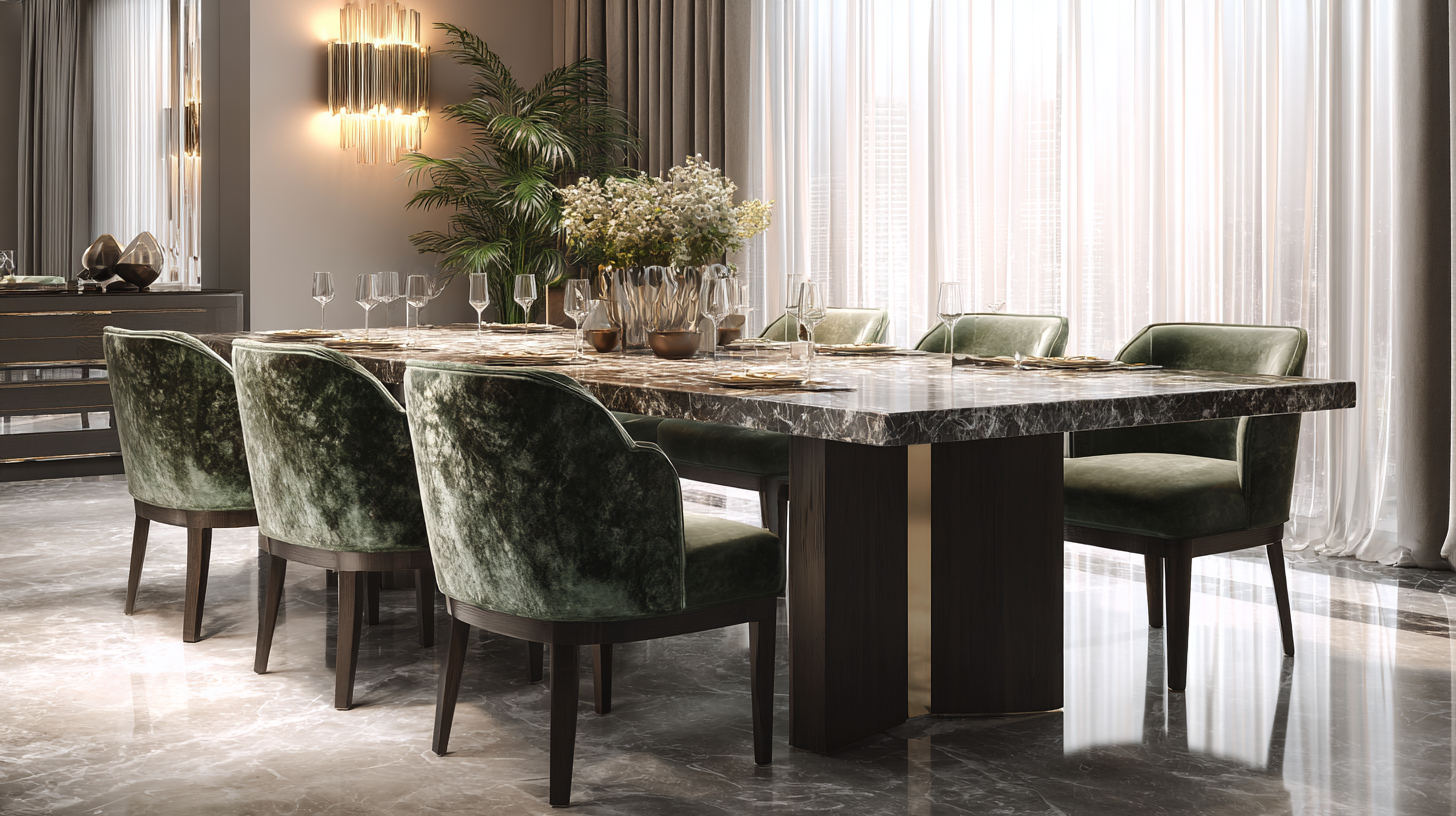 With various styles, sizes, and materials available, the challenge lies in finding a piece that not only complements your home’s decor but also meets your everyday needs. An ideal dining table serves as a versatile focal point where family and friends converge, making it essential to consider both form and function. Whether you're aiming for a rustic farmhouse look or a sleek modern design, understanding the key elements that contribute to a perfect dining table can significantly enhance your living space and dining experience.
With various styles, sizes, and materials available, the challenge lies in finding a piece that not only complements your home’s decor but also meets your everyday needs. An ideal dining table serves as a versatile focal point where family and friends converge, making it essential to consider both form and function. Whether you're aiming for a rustic farmhouse look or a sleek modern design, understanding the key elements that contribute to a perfect dining table can significantly enhance your living space and dining experience.
When choosing the perfect dining table for your home, understanding your aesthetic is crucial. Today's interior design landscape showcases a variety of styles that can harmonize with your dining space. For instance, the Mediterranean style, characterized by its vibrant colors and earthy tones, has become increasingly popular as it evokes a sense of warmth and relaxation reminiscent of coastal living. According to industry reports, the Mediterranean aesthetic is booming, making up a significant portion of interest in interior design themes, particularly in areas where outdoor dining is prominent.
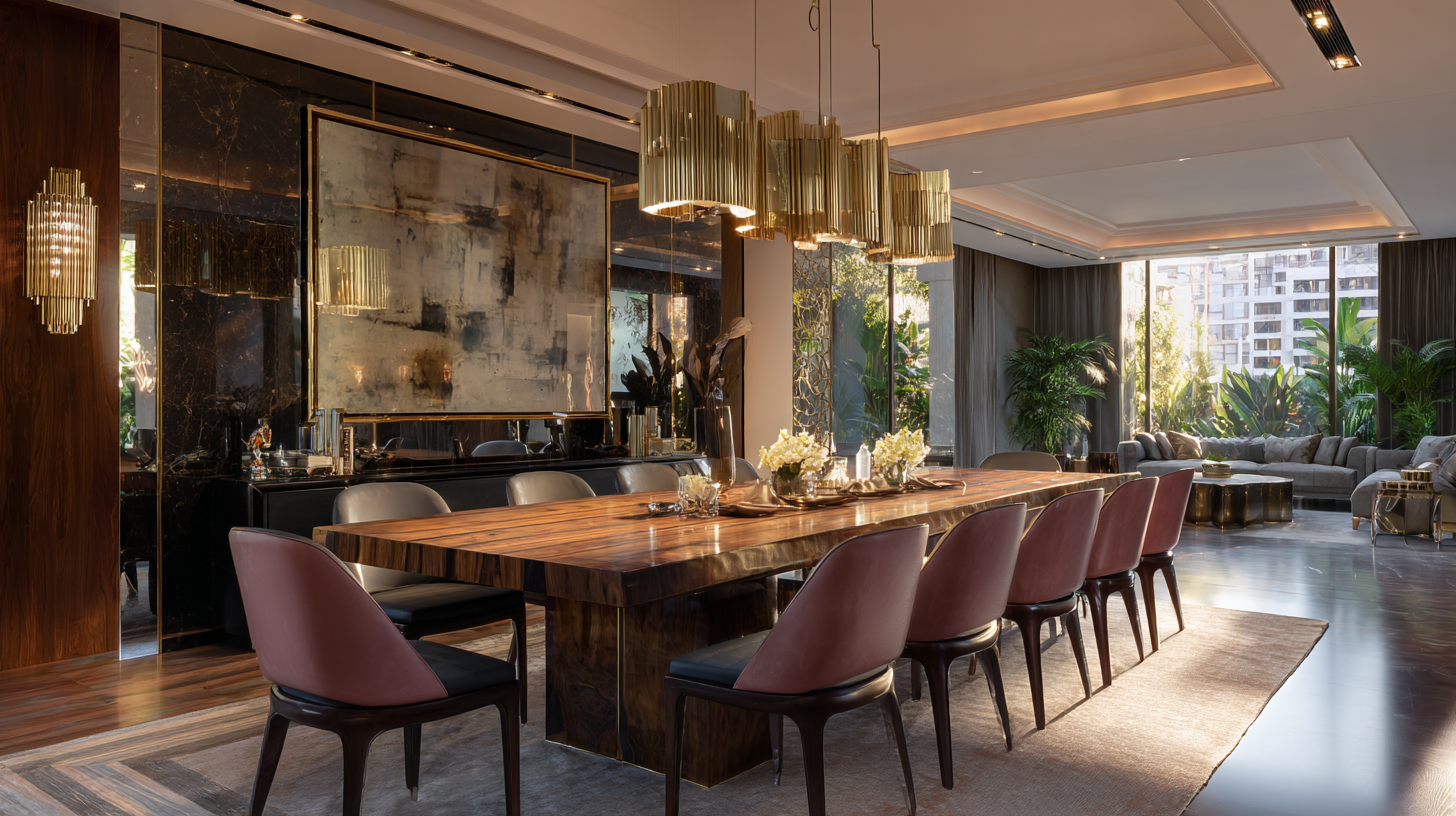
Moreover, as couples merge their living spaces, the challenge of combining different design styles emerges. Recent expert advice emphasizes the importance of balance and repetition when unifying aesthetics. Designers report that by identifying the core elements of each partner's preferred styles—be it Rustic, Modern, or Scandinavian—homeowners can create a cohesive look that respects individual tastes while crafting a harmonious environment. The key is to ensure that your dining area reflects a blend of styles that resonate with both partners, ultimately enhancing the home's overall functionality and aesthetic appeal.
When selecting a dining table, understanding your space requirements—specifically size and shape—is vital to achieving both aesthetic appeal and functional use. The dimensions of your dining area dictate what type of table can comfortably fit, ensuring that movement around the space remains unobstructed. A good rule of thumb is to allow at least 36 inches of clearance around the table for easy movement and access to chairs.
**Tips:** To determine the best table size, measure your room and account for any additional furniture, such as sideboards or cabinetry. If your dining area is petite, round tables can be an excellent choice as they facilitate conversation and can provide a more intimate dining experience.
Additionally, consider the table shape that complements your space. Rectangular tables are ideal for larger, elongated spaces, while square tables can nicely fit square dining areas. Ensure that the table shape harmonizes with your room's layout and functions well for your household needs, allowing ample seating without crowding the area.
**Tips:** For narrow spaces, opt for a narrow rectangular table or a drop-leaf option, which can be adjusted based on the number of diners. Keeping these factors in mind will help create a balanced and inviting dining area.
This bar chart illustrates the preferred dining table sizes based on family sizes. It helps homeowners understand the spatial requirements necessary for accommodating different numbers of people comfortably during meals.
When selecting a dining table for your home, the material is a crucial factor that directly impacts both longevity and aesthetic appeal. For instance, wooden tables offer a timeless charm and warmth, enhancing the dining experience while providing durability. However, the type of wood can vary widely; hardwoods like oak and maple stand up well to daily use and resist scratching, making them ideal for families. In contrast, softer woods like pine may bring a rustic feel but can be more susceptible to wear and tear over time.
Alternatives such as metal and glass tables also present unique advantages. Metal tables, often associated with modern aesthetics, are exceptionally durable and resistant to heat and moisture, perfect for households with kids or frequent entertaining. Glass tops can add elegance and a sense of space but require regular cleaning to maintain their appeal. Each material’s strengths and weaknesses should be considered concerning your lifestyle, ensuring the chosen dining table fulfills both functional and aesthetic roles in your home.
When selecting a dining table, it’s crucial to consider not only its aesthetic appeal but also its functionality, especially regarding storage and versatility. Look for tables that incorporate built-in storage solutions, such as shelves or drawers, to help keep your dining area organized. These features can be particularly useful in smaller spaces where maximizing functionality is key. Opting for extending tables also allows for adaptability, accommodating both everyday meals and larger gatherings.
**Tip:** Consider a dining table with a drop-leaf design or one that can be easily expanded. This versatility lets you adjust the size based on your needs, providing extra space without sacrificing your home's aesthetic.
Another approach is to choose tables with multi-purpose uses, such as convertible designs that can transition to a workspace or a game table. This flexibility can enhance your living environment, making it not just a dining area but a multifunctional space that suits your lifestyle.
**Tip:** Always measure your dining space before making a purchase to ensure the table you choose fits well and complements the flow of your home.
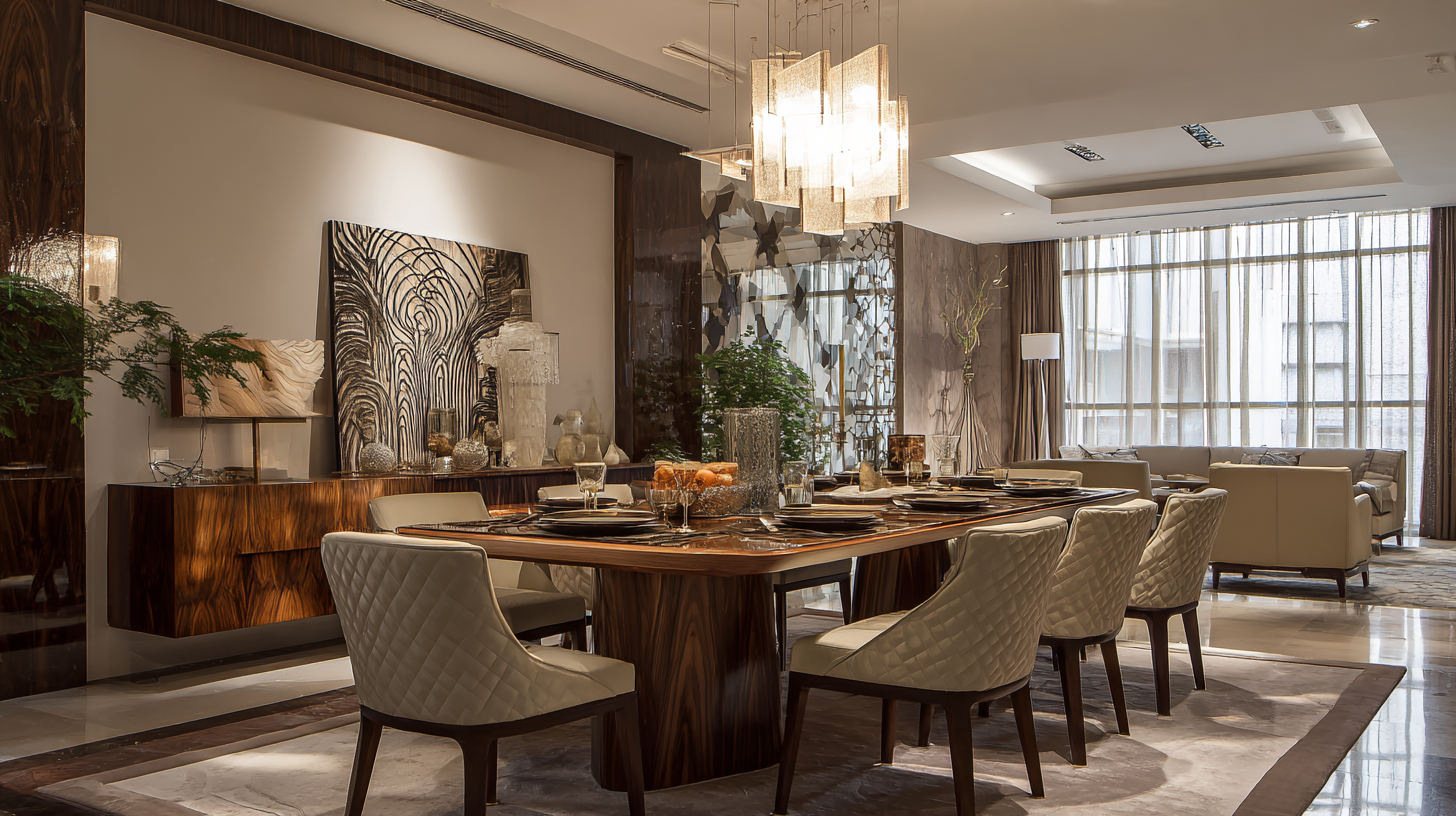
When selecting a dining table, coordinating color and finish with your existing decor is crucial to creating a harmonious environment. Start by assessing the color palette of your dining space. If your walls are painted in neutral tones like beige or gray, you might consider a wooden table with a natural finish to add warmth. On the other hand, if you have bold colors in your decor, a sleek, glossy table can serve as a stunning focal point that balances your room's vibrancy.
The finish of your dining table also plays a significant role in tying the room together. A matte finish can evoke a more rustic and relaxed atmosphere, while a polished surface can contribute to a modern and sophisticated look. Additionally, consider the materials used in your other furniture pieces. For instance, if you have metal accents, such as metal-legged chairs or light fixtures, a dining table with metallic elements can create an intentional and cohesive design. By carefully selecting the color and finish of your dining table, you can enhance the overall aesthetic of your home while ensuring that functionality is not compromised.
| Material | Color Options | Shape | Size (Seats) | Style |
|---|---|---|---|---|
| Wood | Natural, Dark Brown, White Wash | Rectangular | 6-8 | Rustic |
| Glass | Clear, Frosted | Round | 4-6 | Modern |
| Metal | Black, Silver | Square | 4-6 | Industrial |
| Marble | White, Black, Grey | Oval | 6-8 | Elegant |
| Composite | Brown, White, Light Wood | Rectangle | 8-10 | Contemporary |


